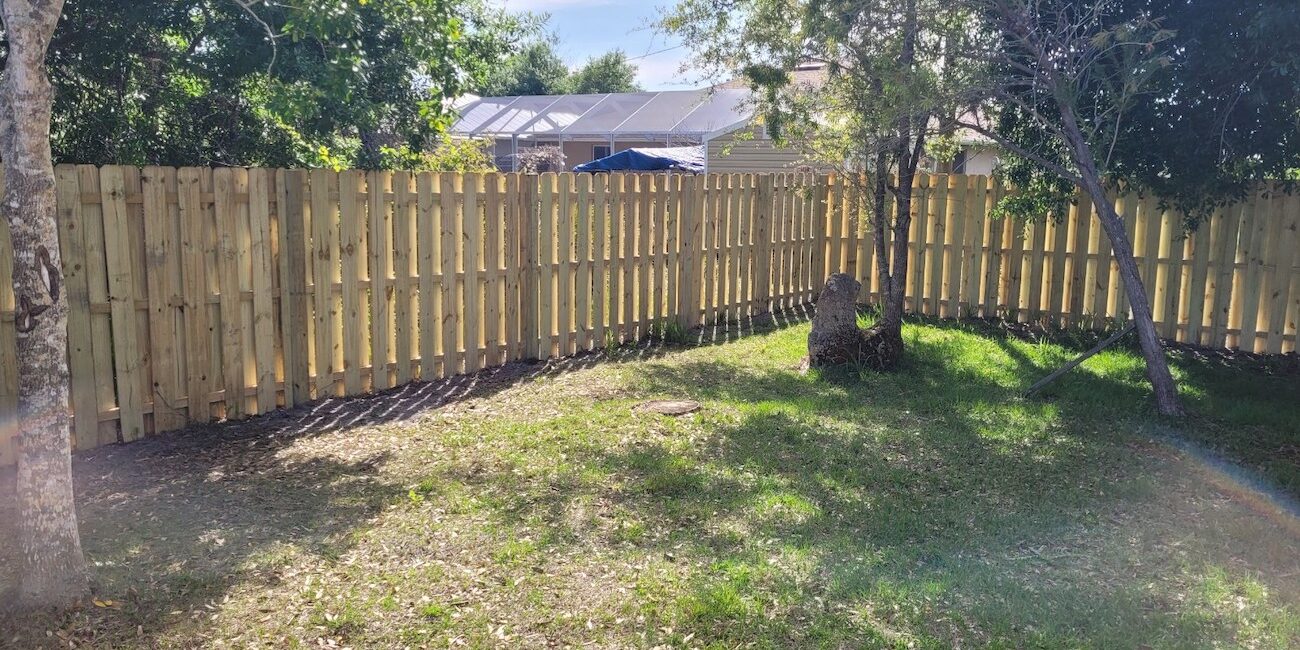How to Choose the Best Fence for Your Property in Charlotte County, Florida
When it comes to selecting the best fence for your property in Charlotte County, Florida, homeowners must consider several crucial factors. The region’s susceptibility to hurricanes, local homeowners association (HOA) regulations, and personal budget constraints play significant roles in this decision.
This article explores the merits and drawbacks of three popular fencing materials: vinyl, aluminum, and wood. We’ll delve into their costs, durability against violent weather, and HOA considerations, helping you make an informed choice that enhances both the security and aesthetic appeal of your home.
Understanding Your Best Fence Options
Vinyl Fencing: A Cost-Effective, Low Maintenance Choice
Vinyl fencing has become increasingly popular among homeowners in Charlotte County due to its durability and low maintenance requirements. Unlike wood, vinyl does not warp, rot, or require frequent repainting. Its clean and crisp appearance remains intact with just occasional washing with soap and water. Initially, the cost of vinyl fencing might be higher than wood, but its longevity and minimal upkeep make it a cost-effective option over time.
Aluminum Fencing: Elegant and Durable
Aluminum fencing offers both elegance and resilience, making it an excellent choice for those looking for style without compromising on strength. It stands up well to humid climates and salty air, prevalent in coastal areas like Charlotte County. Aluminum does not rust like iron and is lighter, making it easier to install. While generally more expensive than vinyl, aluminum fences offer a balance of durability and aesthetic appeal that many homeowners find attractive.
Wood Fencing: Timeless and Traditional
Wood remains a favorite for its natural look and the traditional charm it adds to a property. It is typically the most cost-effective option upfront and can be customized easily in terms of height and style. However, wood fencing requires significant maintenance, including staining or painting and replacing boards as they weather or rot. In hurricane-prone areas, wood fences are less durable than vinyl or aluminum and may need more frequent repairs or replacements.
Comparative Analysis: Costs, Maintenance, and Durability
When choosing the best fence for your property, consider the initial installation costs, ongoing maintenance expenses, and potential lifespan of the material. Here’s a closer look at each option:
- Vinyl Fencing: Higher initial costs but negligible maintenance. Resists moisture and decay, and can last for decades if properly installed.
- Aluminum Fencing: Moderate to high initial costs with low maintenance. Excellent durability against weather conditions, including hurricanes.
- Wood Fencing: Lower initial costs but high maintenance. Vulnerable to weathering and impact damage, especially from hurricanes.
HOA Considerations and Local Compliance
Before installing a fence, check with your local HOA, if applicable, and understand the guidelines and restrictions. HOAs in Charlotte County might have specific rules regarding the height, style, and materials of fences to maintain a cohesive community aesthetic. Vinyl and aluminum are often favored by HOAs for their neat appearance and durability, while wood may be subject to more restrictions due to its maintenance needs and variable appearance over time.
Weather Resilience: Best Options for Hurricane-Prone Areas
In areas like Charlotte County, where hurricanes and severe storms are a common concern, the resilience of your fence material is a crucial consideration. Aluminum and vinyl fencing are generally more capable of withstanding high winds and flying debris than wood fences. Both materials offer designs that allow wind to pass through without causing significant damage, which is vital for longevity in storm-prone regions.
Choosing the best fence for your property in Charlotte County, Florida, involves balancing aesthetic preferences, budget constraints, maintenance willingness, and durability against local weather conditions.
Vinyl and aluminum emerge as strong contenders for their durability and low maintenance, while wood, though cost-effective and beautiful, requires more care and may not fare as well in severe weather. Always consult local HOA guidelines and county regulations to ensure compliance and avoid future complications.
FAQ’s for the Best Fence In Charlotte County
What is the most durable fence material for hurricane zones?
Aluminum and vinyl are the most durable materials in hurricane-prone areas due to their strength and flexibility under high wind conditions.
Can my HOA dictate the type of fence I install?
Yes, most HOAs have guidelines that dictate the material, height, and style of fences within the community to ensure a unified look.
What is the best low-maintenance fence material?
Vinyl is considered the best low-maintenance fencing material as it requires only occasional cleaning and does not need painting or staining.
How often do I need to maintain my wood fence in Florida’s climate?
Wood fences require annual maintenance, including inspecting for damage, applying a waterproof sealant, and possibly repainting or staining to protect against humidity and pests.
How much more does aluminum fencing cost compared to vinyl?
Aluminum fencing can cost 10-30% more than vinyl, depending on the style and height of the fence.
Are there any local regulations in Charlotte County I should be aware of before installing a fence?
Besides HOA rules, check Charlotte County’s building codes and zoning requirements, which may impact fence specifications like height and placement.








